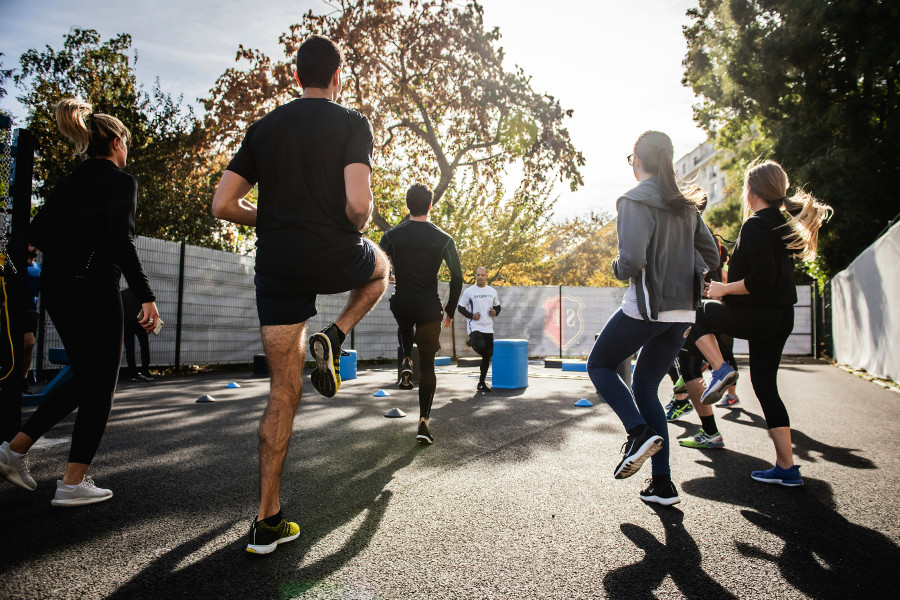How to Get the Most from Regularly Working Out: Essential Tips and Health Benefits
Working out can feel overwhelming at times, especially when you’re just starting out or trying to stay consistent. The good news? With the right approach, it becomes a natural part of your routine, bringing both strength and joy. This guide breaks down practical advice – from how often to train and what to eat, to avoiding injury and staying motivated. Whether you prefer home workouts or the gym, these insights will help you move confidently toward your fitness goals.

1. How often should I work out per week?
Working out regularly is key, but how often depends on you. Generally, aiming for three to five sessions a week strikes a good balance. This rhythm allows your body to build strength, boost heart health, and take the time it needs to recover. You might choose full-body workouts or alternate between cardio and strength training – whatever fits your pace and lifestyle. If you’re new to exercise, starting with two or three days a week can gently ease you in, while seasoned athletes might train nearly every day with rest woven in. Rest days aren’t a sign of weakness but a vital part of your journey, helping muscles heal and grow stronger. Think of exercise as a habit you nurture over time, and consistency will always outshine intensity.
2. Should I do cardio or strength training (or both)?
Both cardio and strength training offer gifts of health, each in their own unique way. Cardio stirs your heart, builds endurance, and burns calories, while strength training sculpts muscles, lifts metabolism, and fortifies bones. Together, they create a dance of balance that supports your whole body. Depending on what you’re seeking – whether it’s losing weight, building muscle, or just feeling better – blending these two can bring the best results. You might do strength work a few times a week, sprinkling in cardio sessions, or try something like HIIT that marries both worlds. Remember, cardio isn’t just running – it’s cycling, swimming, or even brisk walking. Strength training can be bodyweight moves or using bands or weights. The key lies in variety, so your body stays engaged and your mind stays curious.
3. What should I eat before and after a workout?
What you eat around your workouts can be like fuel for a journey. Before exercise, aim for a light meal or snack filled with carbs and some protein about one to two hours ahead. Carbohydrates energize your body, while protein supports your muscles. Think of a banana with peanut butter, oatmeal with fruit, or a simple smoothie. Avoid heavy, greasy foods that might weigh you down. After your workout, especially if you’ve been lifting weights, it’s time to nourish your body with protein and carbs within about 30 to 60 minutes. This helps repair muscles and replenish energy. A grilled chicken wrap, yogurt with berries, or a post-workout shake work well. And don’t forget hydration – water is your silent partner in keeping your body cool and vibrant throughout.
4. How long should my workouts be?
The length of your workout can flow with your needs and your day. For general wellness, 30 to 60 minutes is a sweet spot that fits most lifestyles. Even shorter bursts of 20 to 30 minutes can be powerful, especially if you’re doing something like high-intensity training. Strength sessions often take about 45 to 60 minutes, including warm-up and breaks, while cardio might range from a quick 20-minute blast to a steady 45-minute rhythm. The magic lies not in the clock but in how focused and intentional your movement is. Starting with shorter sessions and building up stamina is perfectly fine. And if time is tight, breaking workouts into smaller chunks throughout your day can still move you forward. What matters most is showing up, consistently.

5. Do I need to warm up and cool down?
Absolutely. Warming up and cooling down are like gentle bookends to your workout, preparing your body and helping it return to calm. A warm-up eases your heart rate up and warms your muscles, reducing injury risks and making your body ready to move. Five to ten minutes of light cardio or dynamic stretches – like arm circles or walking briskly – does the trick. When you finish, cooling down slowly brings your heart back to rest and helps your muscles relax. Light movement and gentle stretching ease tension and boost flexibility. Skipping these steps can leave you stiff or sore, so treat them as essential moments to honor your body before and after you challenge it.
6. How can I stay motivated and consistent?
Motivation is a spark, but consistency is the steady flame that keeps your fitness journey alive. Start by connecting with your deeper reasons for exercising – whether it’s feeling stronger, reducing stress, or just moving more. Treat workouts like appointments you don’t miss, and celebrate small wins along the way. Mixing up your routine with new exercises, classes, or training buddies can keep things fresh and fun. Surround yourself with positivity and remove distractions that tempt you to skip sessions. Remember, motivation ebbs and flows, but discipline carries you through when energy wanes. Even a brief workout on low-energy days is progress. Over time, the habit itself becomes its own reward, fueling both mind and body.
7. Can I work out every day (or do I need rest days)?
Working out daily can be doable, but it hinges on how hard you push and what types of activities you choose. Your body needs moments to rebuild and recharge – rest days are essential for this. They prevent injuries, help muscles grow, and keep your spirit from burning out. That said, rest doesn’t mean stopping entirely. Active rest – think gentle walking, stretching, or yoga – keeps you moving without strain. Beginners might aim for two or three rest days a week, while experienced exercisers could train five to six days, balancing intensity and recovery. Listen to your body’s signals like fatigue or soreness. Rest is part of progress, not a setback.
8. How do I avoid overtraining?
Avoiding overtraining means tuning in to your body’s needs and pacing yourself wisely. Overtraining happens when you don’t allow enough recovery between workouts, leading to exhaustion, irritability, or even injuries. Make sure to include at least one full rest day each week, and vary your workouts to give different muscles a break. Pay attention to signs like persistent soreness or slipping performance – they’re your body’s way of asking for a pause. Nourish yourself with good food, hydrate well, and prioritize sleep, as these are all vital for repair. Keeping a workout journal can help spot when you’re pushing too hard. Remember, more isn’t always better – smart balance wins the race.

9. How can I prevent or treat muscle soreness?
Muscle soreness is a natural companion when your body meets new or challenging movements – it’s called delayed onset muscle soreness (DOMS). To soften its impact, start slowly, warm up well, and increase intensity gradually. Drinking water, eating well, and getting enough sleep supports your recovery, too. After workouts, cooling down and stretching help blood flow and ease tightness. If soreness shows up, gentle movement like walking or light stretches can soothe aches. Applying heat or cold packs, soaking in Epsom salt baths, or rolling out muscles with a foam roller can offer relief. Avoid jumping straight into hard workouts when sore – give your body time. With regular training, soreness usually fades and becomes less frequent.
10. What is proper form and how do I avoid injury?
Proper form is all about moving with intention and care, making sure your body is aligned and engaged to prevent strain or harm. When your posture and technique are right, you get the most from your exercise while keeping injuries at bay. Start with bodyweight exercises to learn the basics before adding weights. Watching tutorials or working with a coach can help you understand the correct moves. Focus on controlled, steady motions rather than speed or heavy loads. Warm up well, listen to how your body feels, and stop if something hurts. A strong core, full range of motion, and steady breathing support good form. Progress slowly and make consistency your priority. Good form is your body’s best defense and guide to better results.
11. How long will it take to see results?
Seeing changes depends on where you start, your goals, and how steady you are with your routine. You might notice boosts in energy and mood within a week or two. Visible changes like muscle tone or fat loss often emerge after four to eight weeks of consistent effort. Strength and endurance gains can happen even sooner. Results aren’t just about the scale – pay attention to how your clothes fit, how you feel, and how your performance improves. Everyone’s body responds differently, so patience is key. Setting realistic goals and tracking progress helps keep you grounded. The journey is as important as the destination, and lasting benefits go far beyond quick fixes.
12. Can I get fit without the gym (e.g., home/bodyweight workouts)?
Yes, absolutely. Fitness doesn’t need fancy equipment or a gym membership. Your own body can be a powerful tool – think squats, push-ups, lunges, planks, and burpees – all movements that build strength and stamina. There are countless online classes and apps that guide you through workouts suitable for any level. Cardio can be as simple as jumping rope, dancing, or heading outdoors for a walk or run. What matters most is staying consistent, challenging yourself, and keeping good form. Household items like chairs or stairs can add variety, too. Many people find they can meet or exceed their fitness goals right at home, proving it’s less about where you work out and more about how you commit.
Here are a few useful resources for further reading:
Enjoy your journey towards a healthier life.



